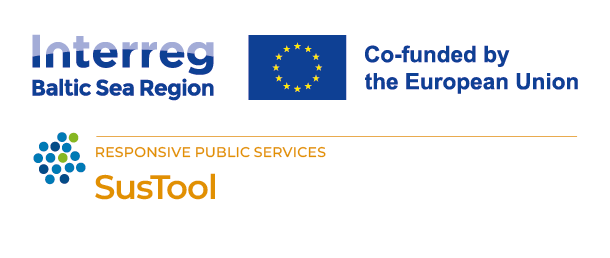Unpacking Packaging: Conversation with Alder Harkmann on Estonia’s Circular Future
In the debut episode of the new Zero Waste Estonia podcast, host Marianne Sepp welcomes Alder Harkmann, the head of Eesti Pakendiringlus (Estonian Packaging Recycling Organisation). Together, they dive into the current state of packaging recycling in Estonia, bust common myths, and explore what it takes to move closer to a truly circular economy.
What is Eesti Pakendiringlus?
Eesti Pakendiringlus is Estonia’s packaging recycling organisation. Its mission is clear:
To create and maintain a nationwide network for packaging collection.
To organise the recycling of packaging waste in line with legal obligations.
To inform the public about how and where they can return packaging.
With more than 2,000 collection containers installed across all local municipalities, the organisation ensures that used packaging can be collected conveniently and responsibly. After collection, packaging must be sorted before it can be recycled. The organisation collaborates with all sorting stations operating in Estonia to ensure efficient processing.
When it comes to actual recycling, Eesti Pakendiringlus actively seeks the best partners, prioritising local recycling facilities whenever possible. The entire system is financed by fees paid by packaging producers.
From Trash to Treasure: A Personal Drive
What motivates Harkmann is seeing how discarded packaging becomes something new. He’s particularly fond of glass – a material that’s highly recyclable and can be transformed into new jars, bottles, or even lightweight aggregate for construction.
Each year, the organisation’s clients declare around 65,000 tonnes of packaging. Of this, over 40,000 tonnes are successfully recycled.
What Works, What Doesn’t
The recycling situation is promising when it comes to materials like paper, cardboard, metal, and glass. The main bottleneck? Plastics – especially composite and soft plastics. These are harder to recycle due to their complex structure, and in many cases, suitable recycling plants don’t yet exist.
Plastic continues to dominate due to its favourable qualities – light weight, durability, and hygiene. But increasing the share of packaging waste sent for recycling hinges on two critical factors: the recyclability of the material, and whether there’s an existing facility that can turn it into something new.
The Role of Local Governments
Municipalities play a crucial role in the packaging system. Every collection point is agreed upon with local authorities, who decide where containers can be placed. Harkmann notes that collaboration and clear decision-making could be improved. Municipalities can choose to run competitive tenders for all types of waste management, or they can update local waste regulations to require apartment buildings of a certain size to collect various waste types separately, including packaging.
Fortunately, Eesti Pakendiringlus is increasingly being included in discussions around strategic development plans and waste management regulations. The goal remains shared: reduce waste, increase recycling, and move toward circularity.
Targets and Realities
Estonia has committed to ambitious EU recycling targets: 55% of municipal waste should be recycled by the end of 2025. In 2023, the rate was around 38%. Harkmann hopes this will surpass 40% in 2024, and reach 50% this year. “The ice is melting,” he says – momentum is building.
Still, skepticism remains. One persistent myth is that “everything ends up in the same bin and gets incinerated anyway.” Harkmann pushes back against this narrative firmly: “It would mean the entire system – every container, every factory – is built on a lie. That’s simply not true. These facilities exist, and real work is being done to increase recycling rates.”
The Messy Reality
Not every container tells a story of success. There are occasional shocks – construction debris or even a lamb carcass showing up in what should be a packaging container. Contamination, especially from food waste or rotting materials, can ruin entire batches of recyclable material.
Looking Ahead
Launched in April, the Zero Waste Estonia podcast aims to spotlight systemic solutions to waste and support the transition to a circular economy. The first episode sets the tone – honest, practical, and hopeful. With supporters like Alder Harkmann, who not only leads but believes in the mission, the path toward smarter waste systems becomes clearer.
Zero Waste Estonia is part of SusTool (Sustainability reporting tool) project (2023-2025) which is co-financed by Interreg Baltic Sea Region programme 2021-2027, 1 Priority Innovative societies, 1.2 Objective Responsive Public services and it contributes to EUSBSR PA Innovation Action.
Project partners include the Ministry of Economic Affairs and Communications as the lead partner from Estonia, and as partners: the Ministry of Finance and ITL from Estonia; VARAM and LIKTA from Latvia; DIMECC LTD from Finland, INFOBALT from Lithuania. The project will conclude on December 31, 2025.


